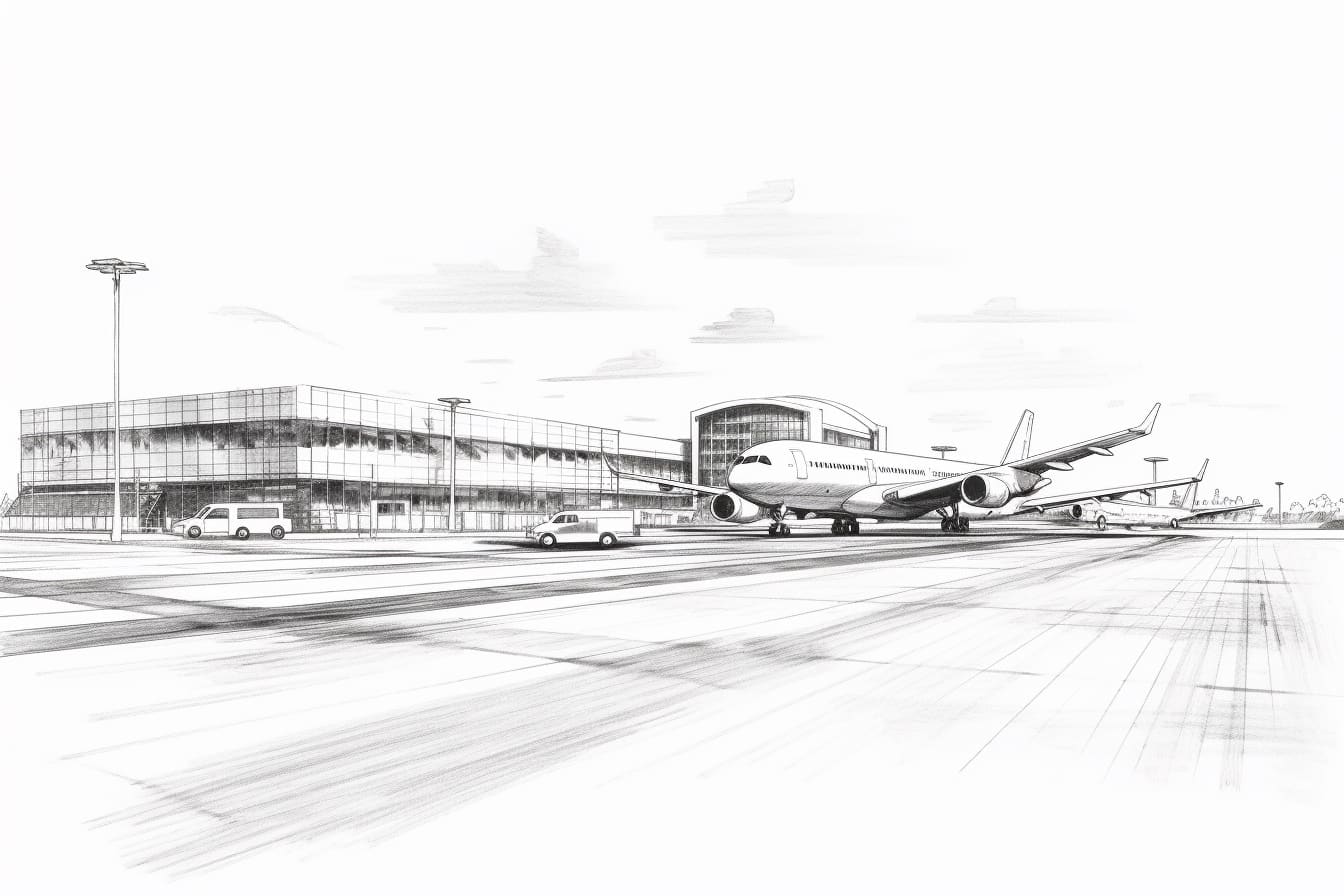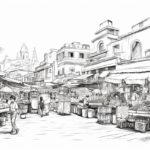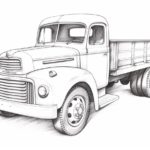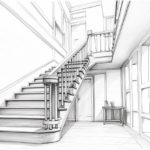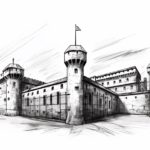Drawing an airport can be a fascinating and challenging subject for any artist. Airports are bustling hubs of activity, filled with a diverse array of people, airplanes, and architectural structures. Capturing the hustle and bustle of an airport on paper requires keen observational skills and a careful eye for detail. From the sleek lines of the airplanes to the intricate designs of the terminals, there is a wealth of visual information to explore and interpret. Join me on a journey as we delve into the art of drawing airports, learning how to capture the dynamic energy and unique atmosphere of these modern transportation hubs.
Materials Required
To draw an airport, you will need the following materials:
- Drawing paper or sketchbook
- Pencils (different grades for shading)
- Eraser
- Ruler (for creating straight lines)
- Compass (for drawing circles if needed)
- Fine-tipped pens or markers (for adding details)
- Reference images of airports for inspiration and accuracy
Optional materials:
- Colored pencils or markers (for adding color)
- Blending stumps or tortillons (for blending shading)
- Drawing board or table for a stable surface to work on
These materials will help you create a detailed and realistic drawing of an airport.
How to Draw an Airport: a Step-by-step Guide
Step 1: Sketching the Layout
- Start by drawing a horizontal line slightly curved at the center to represent the runway.
- Add two parallel lines on either side of the runway to outline the taxiway.
- Draw a rectangle at one end of the runway to indicate the terminal building.
- Sketch smaller rectangles and squares around the terminal building to represent hangars, control towers, and other airport structures.
Step 2: Adding Details to the Terminal Building
- Refine the rectangle shape to add doors and windows to the terminal building.
- Add a curved roof to the terminal building for a more realistic look.
- Draw lines to represent the jet bridges connecting the terminal to the planes.
- Add details like signage and flags to make the terminal building more authentic.
Step 3: Drawing Aircraft on the Runway
- Sketch the basic outline of an airplane on the runway. Start with the main body, wings, and tail.
- Add details like windows, engines, and the cockpit to the airplane.
- Draw smaller airplanes parked at the hangars or taxiing on the runway to create a sense of activity.
- Include ground support vehicles like baggage carts and fuel trucks for added realism.
Step 4: Adding Landscaping and Background Details
- Draw the surrounding landscape, such as trees, bushes, and grass to frame the airport.
- Include fencing or security barriers around the airport perimeter.
- Add details like parking lots, roadways, and vehicles to show the airport’s connection to the outside world.
- Consider adding a clear sky or clouds in the background to enhance the scene.
Step 5: Refining and Finalizing the Drawing
- Go over your sketch with darker lines to define the shapes and details more clearly.
- Erase any unnecessary guidelines or overlapping lines to clean up the drawing.
- Add shading and highlights to create depth and dimension in your airport drawing.
- Consider adding color using colored pencils, markers, or digital tools to bring your airport illustration to life.
By following these steps and adding your own creative touches, you can create a detailed and realistic drawing of an airport.
Conclusion
In conclusion, drawing an airport is a challenging yet rewarding task that allows artists to capture the dynamic energy and intricate details of these bustling transportation hubs. By following the step-by-step guide and incorporating perspective techniques, aspiring artists can create realistic and visually engaging airport scenes. Remember to practice regularly, observe your surroundings, and experiment with different mediums to further develop your skills in drawing airports. Embrace the creativity and freedom that drawing offers, and enjoy the process of bringing this fascinating subject to life on paper.
Fun Facts About Airports
- The busiest airport in the world is Hartsfield-Jackson Atlanta International Airport in the United States, serving over 100 million passengers annually.
- Singapore Changi Airport is consistently ranked as one of the best airports in the world, known for its rooftop swimming pool, butterfly garden, and movie theaters.
- Some airports, like Denver International Airport in the US, feature unique and controversial artwork, such as the famous blue mustang statue known as “Blucifer.”
- Amsterdam Airport Schiphol in the Netherlands has an on-site library where passengers can borrow books for their journey.
- Incheon International Airport in South Korea offers cultural experiences for travelers, including traditional Korean performances and a Korean culture museum.
- The world’s shortest commercial flight is between Westray and Papa Westray in Scotland, with a flight time of just 1.5 minutes.
- Zurich Airport in Switzerland has its own brewery where passengers can watch the brewing process and sample fresh beer.
- Some airports, like Munich Airport in Germany, have dedicated nap pods or sleeping areas for passengers to rest during layovers.
- Helsinki Airport in Finland has a free Finnish sauna for passengers to relax and unwind before or after their flights.
- Many airports around the world have unique and interesting runway configurations, such as the Princess Juliana International Airport in St. Maarten, where planes fly low over a public beach before landing.
Suggestions for Scenes and Settings for Airport Drawings
- Busy Terminal: Capture the hustle and bustle of a busy airport terminal with travelers rushing to catch their flights, airport staff assisting passengers, and luggage carts weaving through the crowds.
- Runway: Illustrate a scene on the airport runway with airplanes taking off and landing, ground crew directing traffic, and baggage carts loading and unloading cargo.
- Control Tower: Draw a detailed image of the airport control tower overseeing the entire airport operations, with radar screens, communication equipment, and air traffic controllers managing incoming and outgoing flights.
- Arrivals Hall: Create a warm and welcoming scene in the arrivals hall with families reuniting, passengers collecting their luggage, and airport staff guiding travelers to their transportation.
- Departures Gate: Show a scene at a departures gate with passengers waiting to board their flights, flight attendants checking tickets, and the anticipation of a new journey ahead.
- Baggage Claim: Illustrate the chaotic yet exciting atmosphere at the baggage claim area with luggage carousel spinning, passengers searching for their bags, and airport staff assisting with lost luggage.
- Airport Lounge: Draw a cozy and comfortable airport lounge with travelers relaxing in plush chairs, enjoying a meal or drink, and browsing through books or magazines before their flight.
- Security Checkpoint: Capture the security checkpoint scene with passengers queuing up for screenings, security personnel checking bags and scanning passengers, and the sense of heightened security measures.
- Airport Tarmac: Depict the expansive airport tarmac with a variety of airplanes parked, fuel trucks refueling aircraft, and ground crew preparing planes for departure.
- Airport Architecture: Focus on the unique architecture of the airport terminal building, highlighting its modern design, glass facades, and iconic features that make it stand out.

